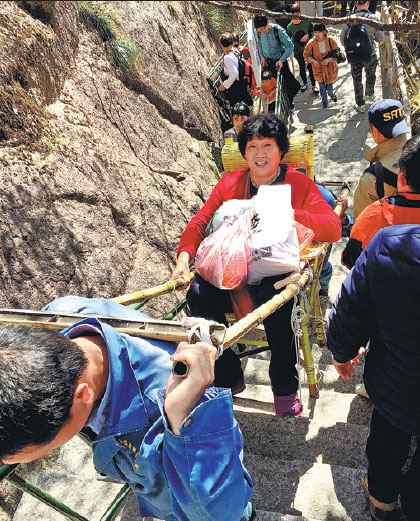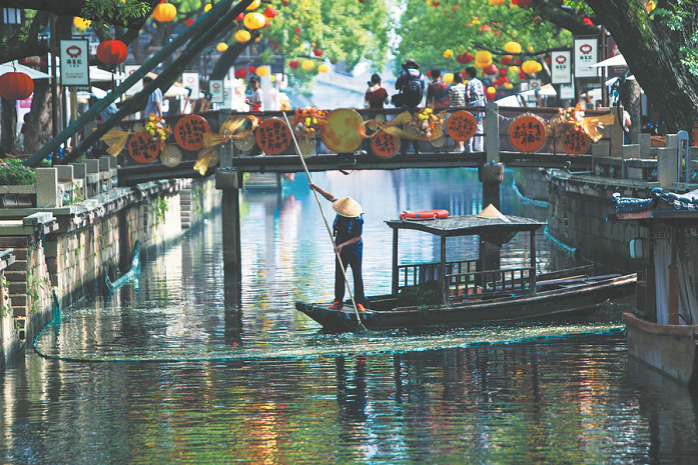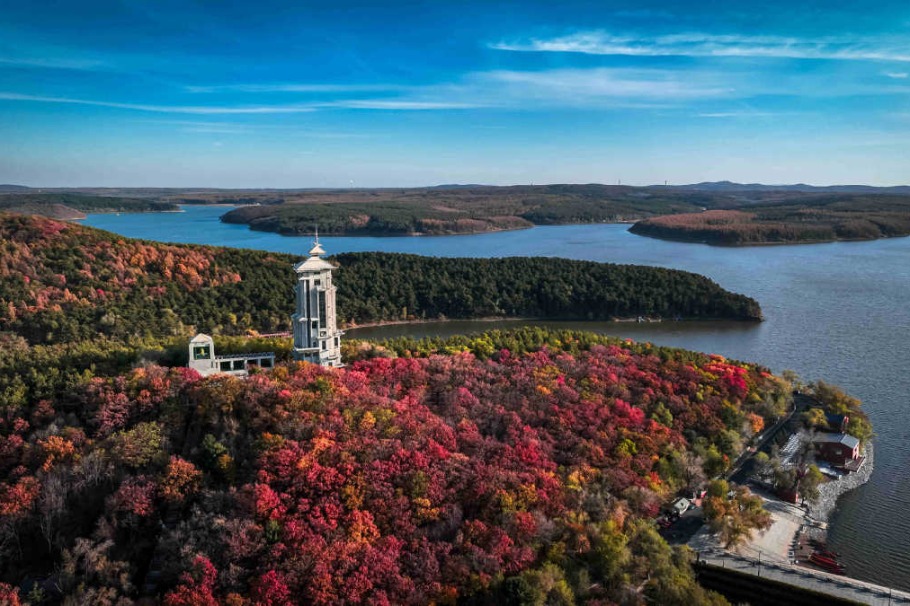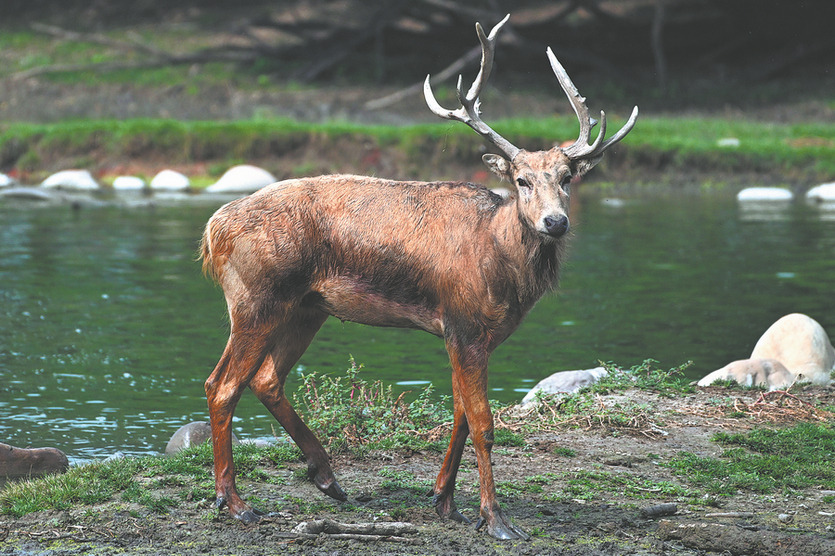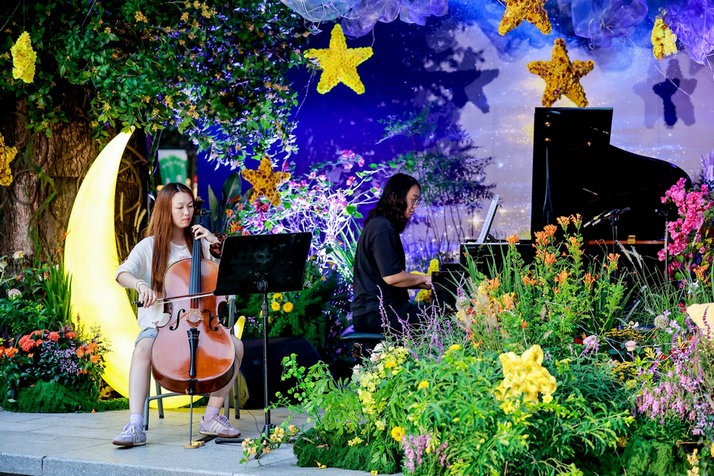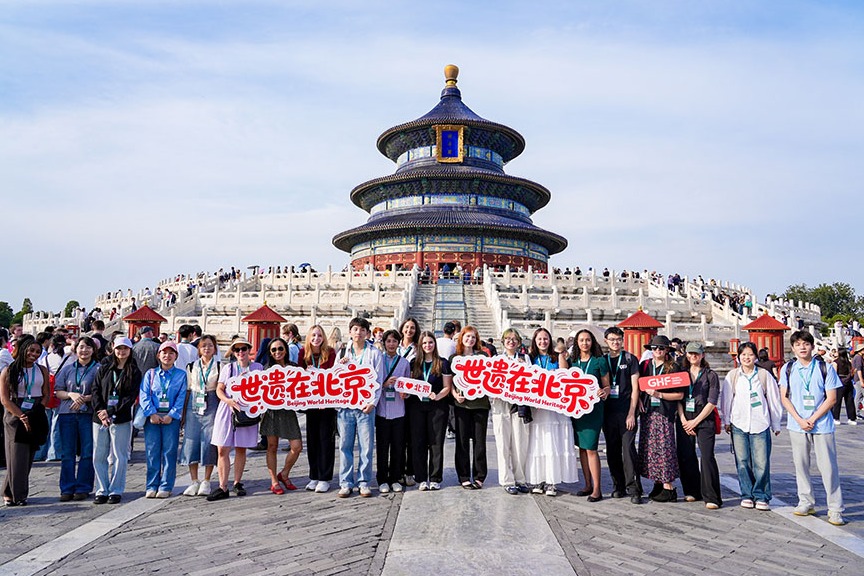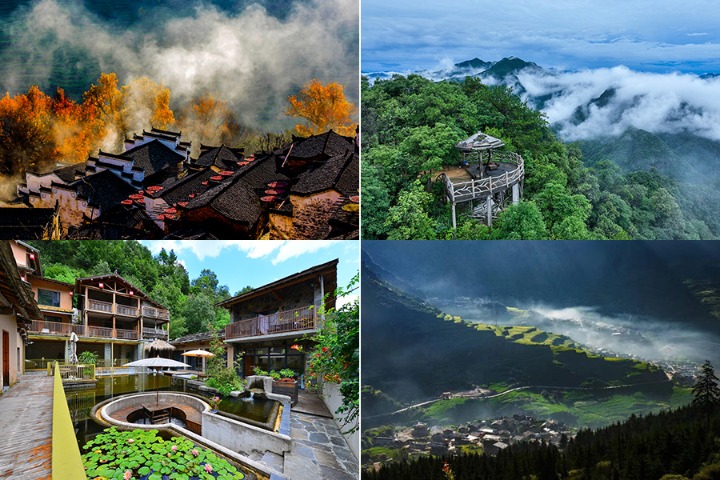Mountain pressure

As visitor numbers to Huangshan soar, mammoth challenges emerge for ecology officials tasked with protecting the scenic spot. Yang Feiyue reports.
Strangely-shaped pine trees, grotesque rock peaks and a sea of clouds all make Huangshan Mountain a special treat for visitors, whether they be hikers, nature lovers or photography buffs.
Located in the south of East China's Anhui province, the mountain range covers an area of 1,200 square kilometers and has long been considered the epitome of classic Chinese landscape scenery.
"You might never understand the beauty of Chinese poetry if you fail to see the scenery Huangshan presents," says Ge Xufang, an official with the Huangshan scenic spot management committee.
| The Huangshan Mountain boasts distinctive pine trees. Photos by Yang Feiyue / China Daily |
| The mountain, considered the epitome of classic Chinese landscape scenery, draws visitors from around the world. |
Polychromatic trees and flowers carpet Huangshan's vast valleys in late October. Dark green pine trees stand in sharp relief against the rugged milk-white and gray mountain peaks, while clouds shroud some of the lower peaks, all creating a panoramic vision.
The mountain was named a world cultural and natural heritage site back in 1990, and joined the UNESCO-supported Global Geoparks Network in 2004.
There are roughly 90 peaks, each more than 1,000 meters above sea level, and it's a thrilling experience to walk along their precipitous cliffs.
Visitors can opt to take the cableway that takes roughly 10 minutes from the foot of the mountain to one of the major tourism attractions, Yuping or Jade Screen Pavilion, to enjoy the hugely popular Guest-Greeting Pine, which is believed to be at least 800 years old.
The tree has a branch protruding out from the cliff, resembling a waving arm that welcomes visitors from far and wide.
For those with stamina, it takes about three hours on foot to reach the spot.
"It's the perfect time of the year to catch the autumnal scenery," Ge says.
Fresh air and a profound cultural heritage have contributed to the mountain's popularity.
"There are many inscriptions on the precipices and ancient paths and bridges here," Ge says.
Many well-known painters have based their classic artistic creations on Huangshan since the Ming (1368-1644) and Qing (1644-1911) dynasties, which also adds to Huangshan's fame.
Photography competitions also draw a large number of shutterbugs to the scenic area.
Huangshan received more than 180,000 visitors during the recent National Day holiday (Oct 1-8), an increase of 17.4 percent over the same period last year.
In 2016, the number of visitors broke 3.3 million, more than 30 times the number in 1978, and the scenic spot raked in 2.83 billion yuan ($428 million).
The launch of the Hefei-Fuzhou high-speed railway in 2015 has given local tourism a shot in the arm.
"We've seen a significant increase in the number of tourists from cities along the rail line, especially from Beijing, Fujian and Tianjin," Ge says.
Outbound tourists from countries involved in the Belt and Road Initiative are also increasing, especially those from Europe. Visitor numbers from the United States are also rising.
Given the increase in the number of visitors, tourism officials in Huangshan have taken additional measures to ensure the integrity of the local environment.
Fu Qiugui is carrying a big bundle of washed quilts on his back and tourists are moving aside to let him through.
"Clean bedclothes and food are needed at the mountain top," the 50-year-old says.
The bundle he carries weighs 75 kilograms, and would take him five hours on foot, or one hour by cableway, to transport depending on the day.
He normally carries dirty quilts on his way back down the mountain.
Usually, he earns about 200 yuan a day for his work.
Fu lives in a rural area near the scenic spot and has been working as a porter at Huangshan for 24 years.
The biggest challenge for him is the steep road and fickle weather conditions on the mountain.
"It's difficult to walk when it rains or snows," Fu says
But the plus side of his work are the flexible hours.
He usually works for 200 days a year, and returns home to plant or harvest tea during the farming seasons.
"And the income is OK," he says.
Fu's work is part of a larger effort to protect the environment of the scenic spot.
All the bed sheets and quilts have to be carried downhill and washed, before being sent up again. Fresh food is also washed before being delivered to the mountain.
"This prevents wastewater polluting the environment, and avoids the overuse of mountain water, which might undermine the ecology," Ge explains.
There are 250 people like Fu working for eight hotels in the mountains, which can accommodate up to 3,000 guests.
A sanitation team is in place to deal with littering. In some cases, workers use ropes to pick up trash left by tourists in steep ravines and cliffs, Ge says.
Particular efforts have also been made to protect trees and animals. Special personnel have been assigned to take turns to watch the Guest-Greeting Pine around the clock.
There are more than 100 ancient trees in the mountains, all over 100 years old.
"We've kept track of their growth and the soil conditions to ensure their healthy development," says Hu Xinting, a Huangshan ecology official.
The forest coverage rate has increased to more than 98 percent, as opposed to 56 percent in the 1970s. The number of plant varieties has also risen by 300 to 2,100.
A stump-tailed monkey research facility has also been built to preserve the protected wild animal.
Dozens of wastewater treatment facilities have been built to deal with refuse from hotels.
In the future, a new tourist lane will be added to the cableway and its capacity will be increased to meet the rising visitor numbers.
A new scenic spot, Donghai, featuring a waterfall and rivers in the east of the mountain is being planned, and is expected to open to the public within three years.
More tourists also now visit in winter, which was traditionally a travel offseason, to avoid crowds and take in the winter scenery.
"The white snow covering the distinctive pine trees looks magnificent," Ge says.
Contact the writer at yangfeiyue@chinadaily.com.cn
| A tourist being carried up mountain. |
(China Daily 11/06/2017 page22)


















